Anthony Dinglasan, Year 3
Abstract
This project focused on the emerging field of psychobiotics, which explores the relationship between probiotics and mood improvement. Specifically, two brands, President’s Choice Kefir and Liberte Kefir, were compared, as they contain distinct bacterial cultures, Lactobacillus acidophilus and Bifidobacterium lactis, respectively. Two groups of similar age and sex demographics consumed both cultures daily and completed a weekly Brief Mood Introspection Scale test to evaluate the effectiveness of each bacterial strain in relieving stress and improving mood. Both strains showed positive results in improving mood cycles after 2-3 weeks of consistent consumption, with President’s Choice Kefir proving to be slightly more effective. This may be attributed to the fact that Lactobacillus acidophilus produces lactic acid and other products through carbohydrate fermentation, unlike Bifidobacterium lactis. However, due to budget limitations, the dosages used in clinical trials were insufficient to fully realise these benefits. Further research is needed to optimise the use of these functional foods for more effective outcomes.
Introduction
Probiotics, which have been studied since 1905, have been shown to play a positive role in supporting the central nervous system [Isolauri et al, 2011]. As a result, probiotic food products are experiencing rapid growth in the global market [Saavedra et al, 2016]. Currently, these commercial products contain various probiotic species and strains, each offering unique core benefits such as regulating intestinal transit, normalizing disturbed microbiota, promoting turnover of enterocytes, competitively excluding pathogens, enhancing colonization resistance, and producing short-chain fatty acids [Zommiti et al, 2019]. Additionally, specific probiotic species have been identified to provide additional effects such as vitamin synthesis, reinforcement of gut-barrier, metabolism of bile salts, enzymatic activity, and neutralization of carcinogens [Molska et al, 2019. Guo et al, 2019].
Moreover, certain benefits are attributed to specific strains of bacteria, including neurological, immunological, endocrinological effects, and bioactive production [Jung, Jin-Young, et al, 2020]. One notable feature of psychobiotics is their focus on specific bacterial strains. Many probiotic foods, such as yogurt and cheese, contain multiple bacteria strains, such as lactobacillus helveticus, bifidobacterium longum, or lactobacillus casei [Indira et al, 2019]. These bacterias are transferred by the autonomic nervous system which connects the gut and the brain, influencing intestinal activities and functional immune effector cells [Appleton, 2018]. The aforementioned system is classified as the gut-brain axis, a biochemical communication network that extends into the endocrine, metabolic, and immune systems. The effectiveness of these strains can be determined by the release of neurotransmitters such as dopamine, serotonin, GABA, noradrenaline, and γ-aminobutyric acid [Yu et al, 2020, Johnson et al, 2021, Huang and Wu, 2021]. The objective of this study was to determine the effectiveness of these probiotic brands and compare them in order to identify the most successful bacteria strain for improving mood.
Materials and Methods
Two volunteer groups were randomly assigned to two different groups: Group A and Group B, with two participants per group. Each group included an 18-year-old male and a 50-55 year old female. Prior to participation, all participants were provided with a digital consent form that outlined the limited risks and confirmed the absence of diabetes or autoimmune disorders of the participants. Additionally, both brands of fermented milk drink (kefir) used in the study were ensured to be unpasteurized. Group A was instructed to consume President’s Choice Kefir, while Group B was assigned to consume Liberte Kefir. Each participant consumed 1 cup (approximately 237mL) of their assigned kefir brand every morning and recorded their consumption using a Google Form. Weekly, on Saturdays, participants completed the Brief Mood Introspection Scale (BMIS) [Mayer and Caschke, 1998] to record their mood and disposition at the end of each week for a total of 4 consecutive weeks.
Results:
Legend
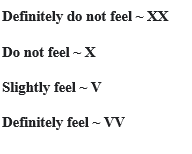
President’s Choice Data (Group A)
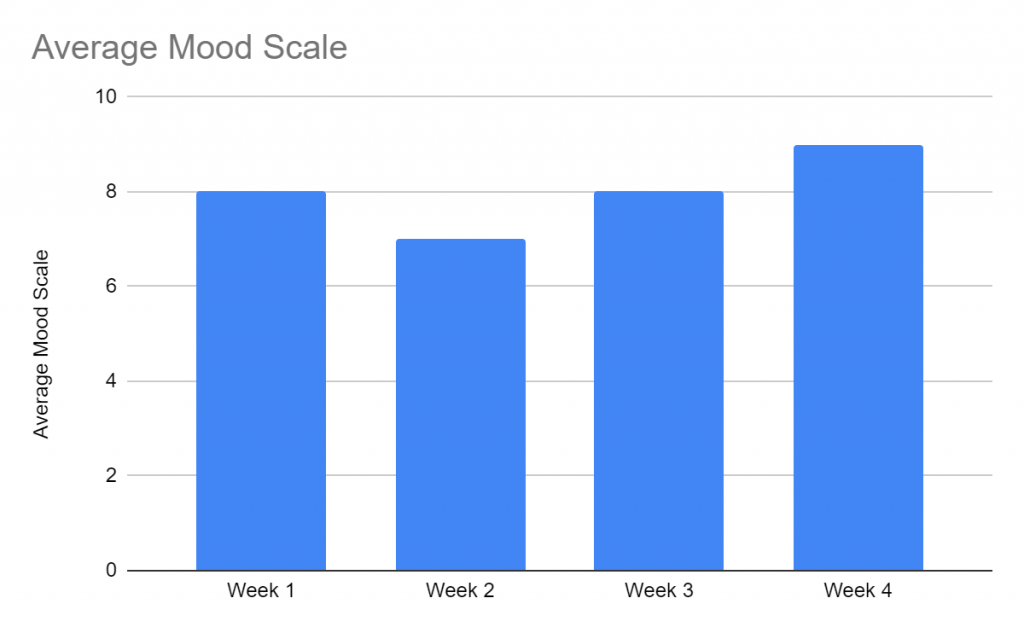
Figure 1: Female 1 (50-55y/o) Average Mood Evaluation
Table 1: Female 1 (50-55y/o) Specific Mood Evaluation
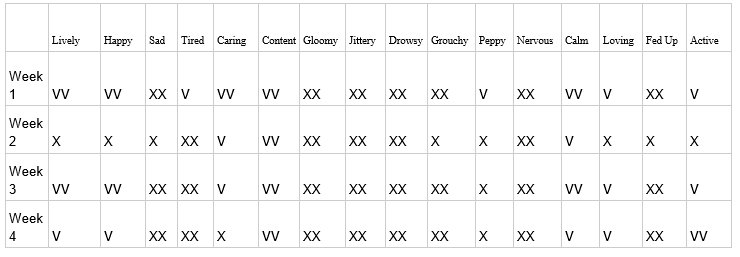
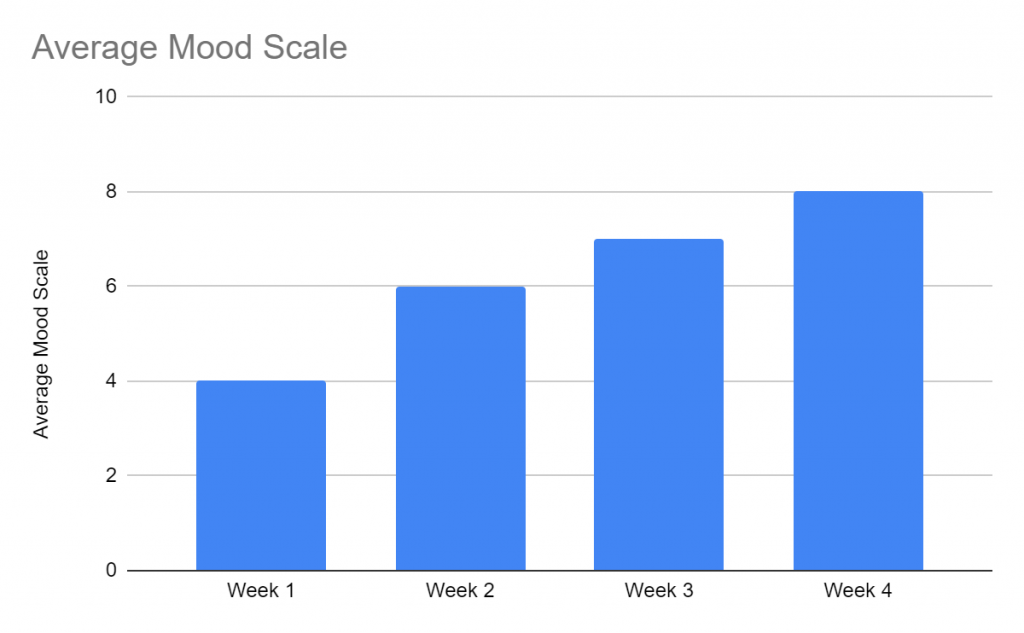
Figure 2: Male 1 (17-18y/o) Average Mood Evaluation
Table 2: Male 1 (17-18y/o) Specific Mood Evaluation
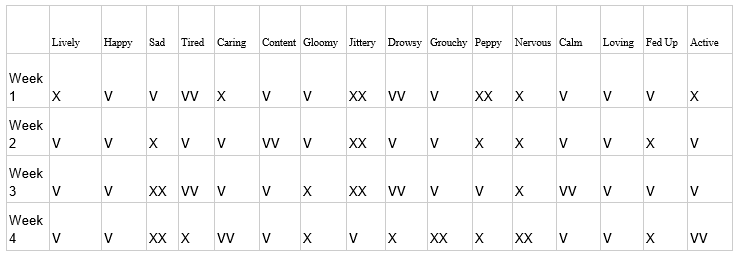
Liberte Kefir Data (Group B)
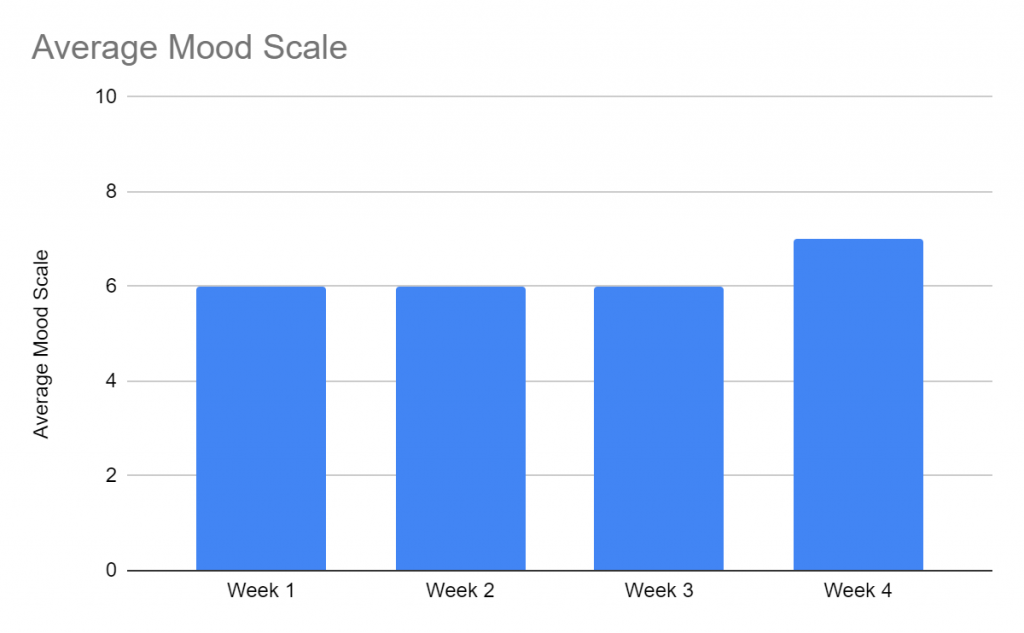
Figure 3: Female 2 (50-55y/o) Average Mood Evaluation
Table 3: Female 2 (50-55y/o) Specific Mood Evaluation
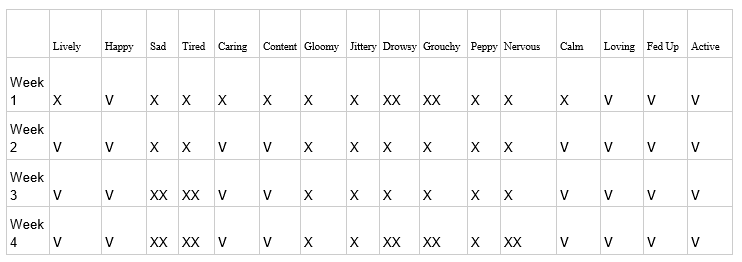
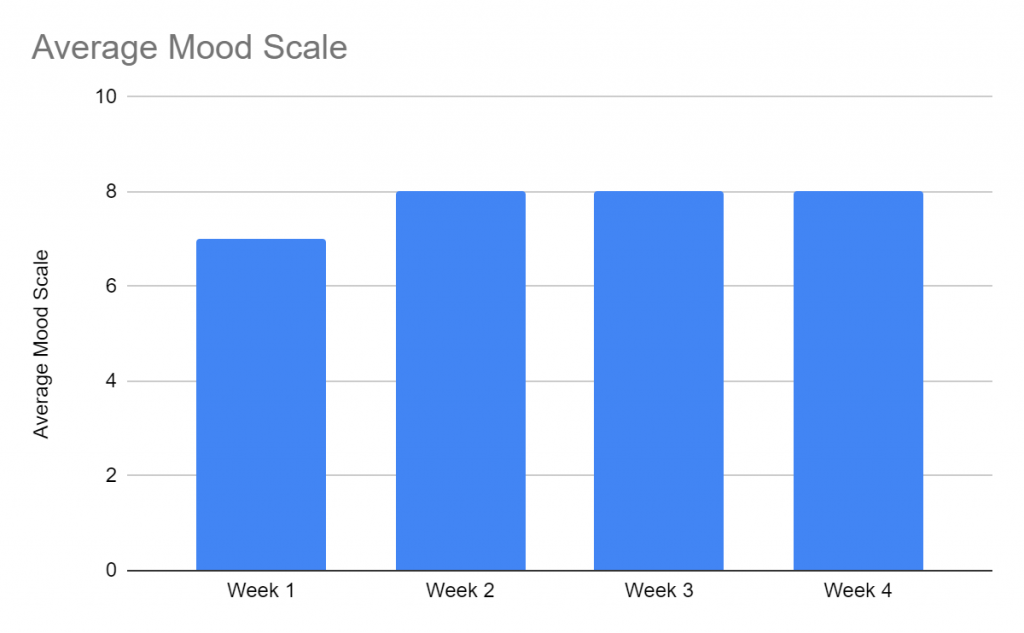
Figure 4: Male 2 (17-18y/o) Specific Mood Evaluation
Table 4: Male 2 (17-18y/o) Specific Mood Evaluation
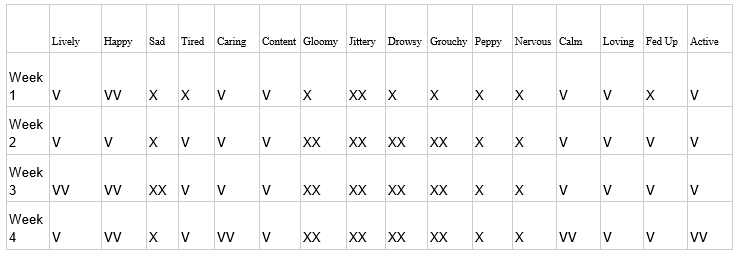
The effectiveness of the interventions was not solely determined by the participants’ self-evaluation of their average mood scale. Rather, it was measured by the positive value displacement between Week 1 and Week 4. Participants who consumed Liberte Kefir, which is rich in Bifidobacterium lactis, showed minimal improvements in mood levels based on specific mood evaluation criteria. Negative characteristics such as tiredness, sadness, and nervousness displayed minimal changes, while positive characteristics such as happiness or activity remained stagnant. On the other hand, participants who consumed President’s Choice Kefir, which is rich in Lactobacillus acidophilus, experienced improvements in positive characteristics and diminished reports of the negative characteristics. Notably, participants also reported reduced bloatedness and drowsiness, although these outcomes were not captured in the tables or figures presented.
Discussion
The purpose of this research is to gauge the effectiveness of probiotics on overall mood and brain function by altering the bacteria in the gut. The results from this study suggests that President Choice Kefir is a more effective probiotic fluid for mood improvement than Liberte Kefir, thereby supporting the hypothesis that brands rich in lactobacillus acidophilus are better alternatives to improve moods than products rich in bifidobacterium lactis [Sackar et al, 2016]. Lactobacillus acidophilus, a strain of probiotic bacteria found in such kefir brands, shown to be beneficial for mood due to its ability to positively impact the gut-brain axis [Ringel-Kulka et al, 2014]. The gut-brain axis is the complex communication network between the gut and the brain, and new research suggests that the health of the gut microbiota, including the presence of beneficial bacteria like Lactobacillus acidophilus, can influence mood and mental well-being [Taper et al, 2012. Kelly et al, 2019]. Lactobacillus acidophilus has been shown to modulate the gut microbiota by producing neurotransmitters, such as serotonin and dopamine, which play a significant role in regulating mood [Liu et al, 2014, Koo et al, 2018]. Additionally, Lactobacillus acidophilus also has anti-inflammatory properties, essentially reducing inflammation in the gut and brain, contributing to an improved mood [Matsumoto et al, 2013. Panda, A.K., et al, 2019]. Although this bacteria strain may not be the sole cause of mood improvement, the use of Lactobacillus acidophilus as a psychobiotic strain to improve outlook is a promising area of research for future therapeutic applications.
Upon this context, Lactobacillus acidophilus may be considered a more effective bacterium for mood improvement than Bifidobacterium lactis due to its ability to produce lactic acid through the fermentation of carbohydrates, as well as other helpful products such as acetic acid [Kumar et al, 2012. Mohanty et al, 2014]. Furthermore, Lactobacillus acidophilus produces stronger metabolic activity than Bifidobacterium lactis, resulting in a more significant positive impact on gut health and overall well-being [Doyle and Buchanan, 2013. Venkatasubramanian and Pandit, 2007]. In recent research, Lactobacillus acidophilus plays a role in supporting the central nervous system and improving mood [M. Islam et al, 2013]. In contrast, Bifidobacterium lactis may not have the same level of metabolic activity and as a result, exhibit fewer health benefits in comparison [Wang et al, 2016]. However, the effectiveness of a bacterium may also depend on various factors such as the specific health condition of the individual, as well as dosage, and personal response. As a result, further research is needed to fully understand the differences between Lactobacillus acidophilus and Bifidobacterium lactis in terms of their efficacy and health benefits. Future research should focus on gut health, immune function, and metabolic disorders. For example, studies concerning irritable bowel syndrome (IBS) and antibiotic-associated diarrhea are areas of further application of the gut-brain axis. Even further, research should be focused on the potential use of Lactobacillus acidophilus as a delivery vehicle for therapeutic agents in the treatment of cancer and other diseases [Yan et al, 2016].
Of course, there are limitations to this study. All participants in this
program were unable to be placed in a controlled environment, thereby external
stimuli such as the amount of workload, coworker’s attitudes, or levels of
extraneous stress will be different for each person. In addition, each person
may have an implicit bias to rate their mood higher than what they actually
feel due to subject bias. Furthermore, data found within this study were based
upon small sample sizes and cannot be generalised to the large populations.
Nevertheless, the results in this study are indicators that probiotics does
have a net positive effect on overall mood and stress relief, also providing
correlation that brands rich in lactobacillus acidophilus (ex: President’s
Choice) is a suitable improvement over brands focusing on the bacterium
bifidobacterium lactis (ex: Liberte).
References
- Appleton, Jeremy. “The Gut-Brain Axis: Influence of Microbiota on Mood and Mental Health.” Integrative Medicine (Encinitas, Calif.), U.S. National Library of Medicine, Aug. 2018, https://www.ncbi.nlm.nih.gov/pmc/articles/PMC6469458/.
- BMIS Mayer, J. D., & Gaschke, Y. N. (1988). The experience and meta-experience of mood. Journal of Personality and Social Psychology, 55, 102-111.
- C. Wang, C. Huang, Y. Cai, X. Yu, and Y. Zhu”Characteristics of exopolysaccharide-producing lactic acid bacteria isolates from Chinese traditional sourdough”. Journal of Bioscience and Bioengineering, Elsevier B.V., 2022, doi: 10.1016/j.jbiosc.2021.12.013.
- Guandalini, Stefano. “Summary of Probiotic Activities of Bifidobacterium.” Journal of Clinical Gastroenterology and Hepatology, vol. 4, no. 4, 2006, pp. 167-170, https://journals.lww.com/jcge/Abstract/2006/10000/Summary_of_Probiotic_Activities_of_Bifidobacterium.3.aspx.
- Guo, Tingting, et al. “Potential Probiotics: Lactobacillus acidophilus NCFM Attenuates Colistin-Induced Intestinal Inflammation and Modulates Gut Microbiota in Mice.” World Journal of Microbiology and Biotechnology, vol. 35, no. 10, Springer, 2019, doi: 10.1007/s11274-019-2739-9.
- H. M. Mohanty, G. K. Kumar, A. Kannan, and S. K. Ranganathan “Lactic acid bacteria as cell factories for the generation of bioactive peptides”. Microbial Cell Factories, BioMed Central, 2014, doi: 10.1186/s12934-014-0094-3.
- Indira, M., Venkateswarulu, T.C., Abraham Peele, K. et al. Bioactive molecules of probiotic bacteria and their mechanism of action: a review. 3 Biotech 9, 306 (2019). https://doi.org/10.1007/s13205-019-1841-2
- Isolauri, Erika et al. “Probiotic Bacteria Lactobacillus acidophilus NCFM and Bifidobacterium lactis Bi-07 Improves Gastrointestinal Symptoms in Colon Cancer Patients Treated with Chemotherapy.” Journal of Clinical Gastroenterology and Hepatology, vol. 7, no. 7, 2011, pp. 658-666, https://journals.lww.com/jcge/Abstract/2011/07000/Probiotic_Bacteria_Lactobacillus_acidophilus_NCFM.9.aspx.
- Johnson D, Thurairajasingam S, Letchumanan V, Chan K-G, Lee L-H. Exploring the Role and Potential of Probiotics in the Field of Mental Health: Major Depressive Disorder. Nutrients. 2021; 13(5):1728. https://doi.org/10.3390/nu13051728
- Jung, Jin-Young, et al. “Effect of Fermented Barley Extracts on Viability of Probiotic Bacteria.” Journal of Microbiology and Biotechnology, vol. 30, no. 1, The Korean Society for Microbiology and Biotechnology, 2020, pp. 61-69, doi: 10.4014/jmb.1911.11019.
- Kelly, John R., et al. “Gut Microbiome and Depression: What We Know and What We Need to Know” PubMed Central (PMC), 2019, https://www.ncbi.nlm.nih.gov/pmc/articles/PMC6469458/.
- Koo, Hyun, et al. PubMed Central “Probiotic Lactobacillus sp. inhibit growth, biofilm formation and gene expression of caries-inducing Streptococcus mutans” (PMC), 2018, https://www.ncbi.nlm.nih.gov/pmc/articles/PMC5848327/.
- Koutinas, Apostolis A., et al. “Production of Probiotic Bacteria for Food Industry.” Advances in Biochemical Engineering/Biotechnology, vol. 124, Springer, 2010, pp. 1-20, doi: 10.1007/10_2009_18.
- Liu, Tongshuo, et al. Taylor & Francis Online, “The effect of probiotics on functional constipation in adults: a systematic review and meta-analysis of randomized controlled trials” 2014, https://www.tandfonline.com/doi/full/10.2147/NDT.S61997.
- M. Islam, M. H. A. Begum, M. Moniruzzaman, M. S. Hossain, and M. R. Amin “Probiotic Potential of Lactic Acid Bacteria Isolated from Fermented Foods” Current Microbiology, Springer, 2013, doi: 10.1007/s00284-012-0285-2.
- M. P. Doyle and R. L. Buchanan “Lactic Acid Bacteria” in Food Microbiology: Fundamentals and Frontiers,, ASM Press, 2013, pp. 225-240. ScienceDirect, Elsevier B.V., https://www.sciencedirect.com/topics/food-science/lactic-acid-bacteria#:~:text=Heterolactic%20fermentation%20is%20performed%20by,acetic%20acid%20(Figure%2011.16).
- M. Wang, Y. Li, W. Liang, and Y. Liang “Lactobacillus reuteri attenuates tumour necrosis factor α-induced intestinal epithelial barrier dysfunction” Journal of Applied Microbiology, Wiley, 2016, doi: 10.1111/jam.13204.
- Matsumoto, Hitoshi, et al. “The health benefits of blackcurrants” – ScienceDirect, 2013, https://www.sciencedirect.com/science/article/abs/pii/S1075996423000197.
- Molska, M., & Reguła, J. (2019). Potential Mechanisms of Probiotics Action in the Prevention and Treatment of Colorectal Cancer. Nutrients, 11(10), 2453. https://doi.org/10.3390/nu11102453
- Panda, A.K., et al. “Effect of Probiotic Lactobacillus spp. on Growth Performance, Nutrient Utilization, Intestinal Morphology, and Cecal Microbiota of Broiler Chickens” – MDPI, 2019, https://www.mdpi.com/2072-6643/11/5/969.
- Probiotics: History.” ScienceDirect, Elsevier, 2016, https://www.sciencedirect.com/science/article/pii/B9780123744074002600.
- R. Kumar, S. Grover, V. Batish, and S. K. Gupta. “Probiotic lactic acid bacteria – A review” by ScienceDirect, Elsevier B.V., 2012, https://www.sciencedirect.com/science/article/pii/S2352385918300653.
- Ringel-Kulka T, Goldsmith JR, Carroll IM, et al. Lactobacillus acidophilus NCFM affects colonic mucosal opioid receptor expression in patients wit hfunctional abdominal pain – a randomised clinical study. Aliment Pharmacol Ther. 2014;40(2):200-7.
- Saavedra, Jose M. “Probiotics History.” Journal of Clinical Gastroenterology and Hepatology, vol. 4, no. 4, 2016, pp. 167-170, https://journals.lww.com/jcge/Fulltext/2016/11001/Probiotics_History.3.aspx.
- Sackar, Amar, et al. “Psychobiotics and the Manipulation of Bacteria–Gut–Brain Signals.” Trends in Neurosciences, Elsevier Current Trends, 25 Oct. 2016, https://www.sciencedirect.com/science/article/pii/S0166223616301138.
- SpringerLink. “The Importance of Probiotics and Prebiotics in Modern Medicine.” SpringerLink, Springer International Publishing, 2016, pp. 139-144, doi: 10.1007/978-3-319-25277-3_9.
- Taper, H.S., et al.”Colonic fermentation of polydextrose in rats” Wiley Online Library, 2012, https://onlinelibrary.wiley.com/doi/full/10.1111/j.1365-2982.2012.01906.x.
- Venkatasubramanian, P., & Pandit, A. B. “Design of fermentation processes for L-lactic acid production” Biotechnology Progress, Wiley, 2007, doi: 10.1021/bp070268v.
- X. Huang, F. Wu. “Brain Neurotransmitter Modulation by Gut Microbiota in Anxiety and Depression.” Frontiers in Cell and Developmental Biology, U.S. National Library of Medicine, 2021, https://pubmed.ncbi.nlm.nih.gov/33777957/.
- Yan F;Li N;Shi J;Li H;Yue Y;Jiao W;Wang N;Song Y;Huo G;Li B; “Lactobacillus Acidophilus Alleviates Type 2 Diabetes by Regulating Hepatic Glucose, Lipid Metabolism and Gut Microbiota in Mice.” Food & Function, U.S. National Library of Medicine, 2016, https://pubmed.ncbi.nlm.nih.gov/31461095/.
- Yu Y;Dunaway S;Champer J;Kim J;Alikhan A; “Changing Our Microbiome: Probiotics in Dermatology.” The British Journal of Dermatology, U.S. National Library of Medicine, 2020, https://pubmed.ncbi.nlm.nih.gov/31049923/.
- Zommiti, Mehdi et al. “Bifidobacteria and Lactobacilli: From Food to Health.” Critical Reviews in Food Science and Nutrition, vol. 59, no. 13, 2019, pp. 2131-2149, https://www.tandfonline.com/doi/abs/10.1080/14787210.2019.1645597.